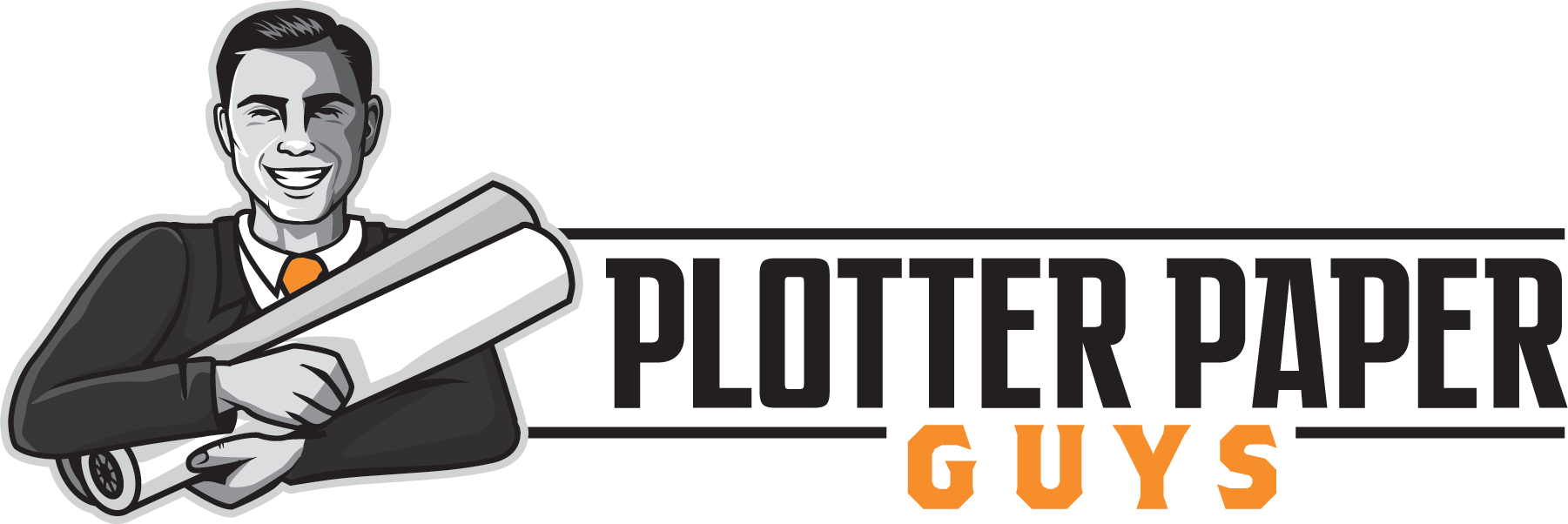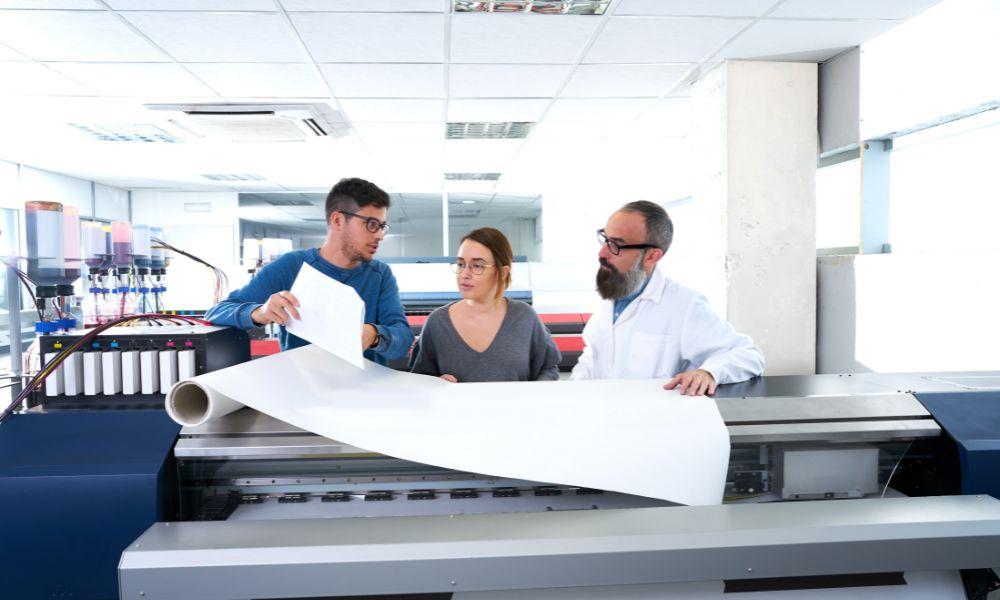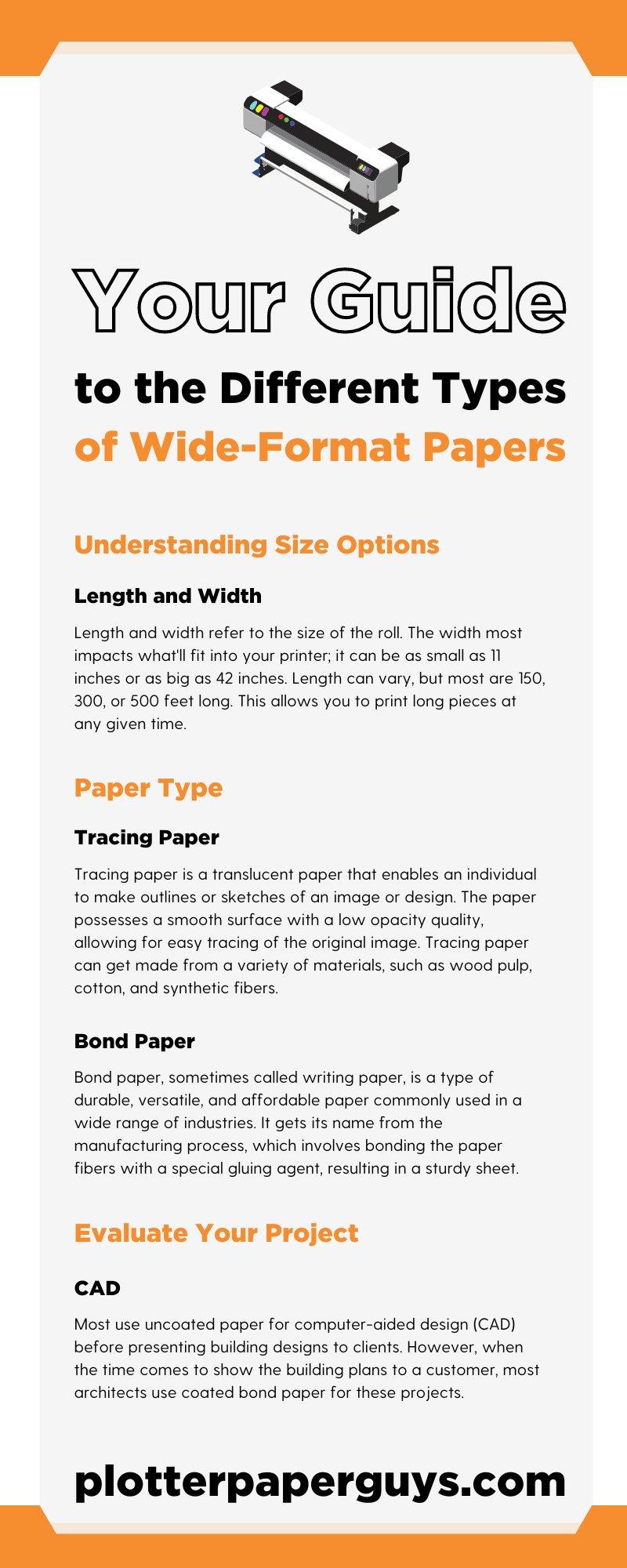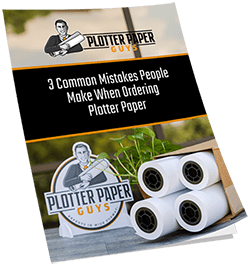Wide-format printing has become integral to many industries, from graphic design and architecture to engineering. However, with so many wide-format papers, it can be challenging to know which is best for your project. That’s why we crafted this guide to the different types of wide-format papers. Check out the information below to determine the product needed for your next project.
Understanding Size Options
Paper size is an important consideration when selecting the type of paper for a project. Different sizes of paper can provide various styles and effects. They may also require a different cutting or folding method in printed materials such as brochures or flyers.
Often the user manual that comes with your printer will explain the ideal size roll or sheets to use. Following these guidelines ensures your printer works correctly and lasts as long as possible.
Length and Width
Length and width refer to the size of the roll. The width most impacts what’ll fit into your printer; it can be as small as 11 inches or as big as 42 inches. Length can vary, but most are 150, 300, or 500 feet long. This allows you to print long pieces at any given time.
So, a roll of paper could measure 24 inches x 300 feet. This means all projects will be 24 inches wide, but that varies depending on your needs. One role will last for several projects.
Tips for Buying Paper Rolls
Know the core diameter required for your printer, as they’re typically two or three inches. Review your printer manual for the exact size your printer can handle to ensure you make the right purchase.
Paper Type
Whether you’re printing posters, banners, or signs, various paper types work for different needs. There are several main options to choose from, including:
- Tracing paper
- Bond paper
- Vellum paper
- Mylar paper
We’ll cover these variations and their common uses as we delve deeper into our guide to the different types of wide-format papers.
Tracing Paper
Tracing paper is a translucent paper that enables an individual to make outlines or sketches of an image or design. The paper possesses a smooth surface with a low opacity quality, allowing for easy tracing of the original image. Tracing paper can get made from a variety of materials, such as wood pulp, cotton, and synthetic fibers.
Many industries, such asart, architecture, engineering, and drafting, use tracing paper. Most use it to create preliminary sketches, blueprints, and schematics in the early stages of drafting. The paper is also lightweight and relatively inexpensive, making it accessible to artists and designers of all experience levels.
Bond Paper
Bond paper, sometimes called writing paper, is a type of durable, versatile, and affordable paper commonly used in a wide range of industries. It gets its name from the manufacturing process, which involves bonding the paper fibers with a special gluing agent, resulting in a sturdy sheet.
One of the most common uses of bond paper is in drafting for engineering and architecture, but graphic artists also use it to print their projects. Other uses of bond paper across industries include:
- Brochures
- Contracts
- Reports
Moreover, textured bond paper is a popular choice for those needing to write on paper after printing, as it offers better writing performance. Many professionals rely on this paper option because of its affordability and durability.
A Bonus
Some types of bond paper have a textured surface which is ideal for writing on. This allows you to make notes on drafts you create for necessary changes before printing the revised copy.
Vellum
Vellum paper is a high-quality and versatile material made from plant-based fibers; it is traditionally known for its durability, translucency, and pristine finish. Most experts use it in graphic design and printing building plans. With its translucent nature, vellum paper can be overlaid on top of images, allowing designers to test layouts and explore various design concepts. Due to this, Vellum paper is an ideal choice for showcasing project materials to clients.
Additionally, vellum paper is widely used in calligraphy and other fine arts, as the smooth texture of the material allows for the easy flow of ink and paint. The plant-based fibers used to create vellum paper also give it an eco-friendly edge, making it a popular choice for those who prioritize sustainability.
Mylar
Mylar paper is a type of polyester film widely used for its durability, strength, and versatility. Manufacturers produce it with a special biaxial orientation process, resulting in a material resistant to tearing, water, and chemicals. Technically, Mylar is a trademarked name for this product, but it is often used interchangeably with other brands of polyester film.
Various industries use Mylar paper, but a few applications in the building industry include:
Mylar paper’s high tensile strength makes it an excellent choice for laminating delicate documents or artwork. The material is available in various thicknesses, ranging from thin sheets for printing or crafting to thicker versions for more heavy-duty applications. In addition, Mylar paper can last a lifetime, making it an excellent choice for archival purposes.
Shopping Tip
Buy 4 mil double matte mylar at The Plotter Paper Guys! We carry many roll sizes and sheets that work with aqueous inkjet printers, including HP, Epson, and Canon.
Evaluate Your Project
Not sure which type of wide-format paper you need to use? Consider the project you need to do and the stage you’re currently at. Tracing paper is ideal for the early stages of drafting. However, most professionals use bond paper, vellum, or Mylar in later stages.
Additionally, consider the type of project. For instance, most graphic designers print their final product on bond paper, but an architect may use vellum or Mylar for the final version of their blueprints.
CAD
Most use uncoated paper for computer-aided design (CAD) before presenting building designs to clients. However, when the time comes to show the building plans to a customer, most architects use coated bond paper for these projects.
Maps
When creating maps, many professionals print them on Mylar, vellum, or coated paper. The option used depends on the application of the final product requested by the client. This is partially because Mylar and vellum are translucent while the coated paper is not.
Graphic Art
Most graphic artists use coated paper for printing their pictures. However, depending on the project, they may use matte, satin, or glossy paper.
Buy Quality Paper
Buying the best paper for your printer is vital to getting the perfect turnout on all your projects. The Plotter Paper Guys are experts in wide format and have various paper options for sale in a range of sizes. Please contact us if you have questions about our products or need help finding a specific item.





